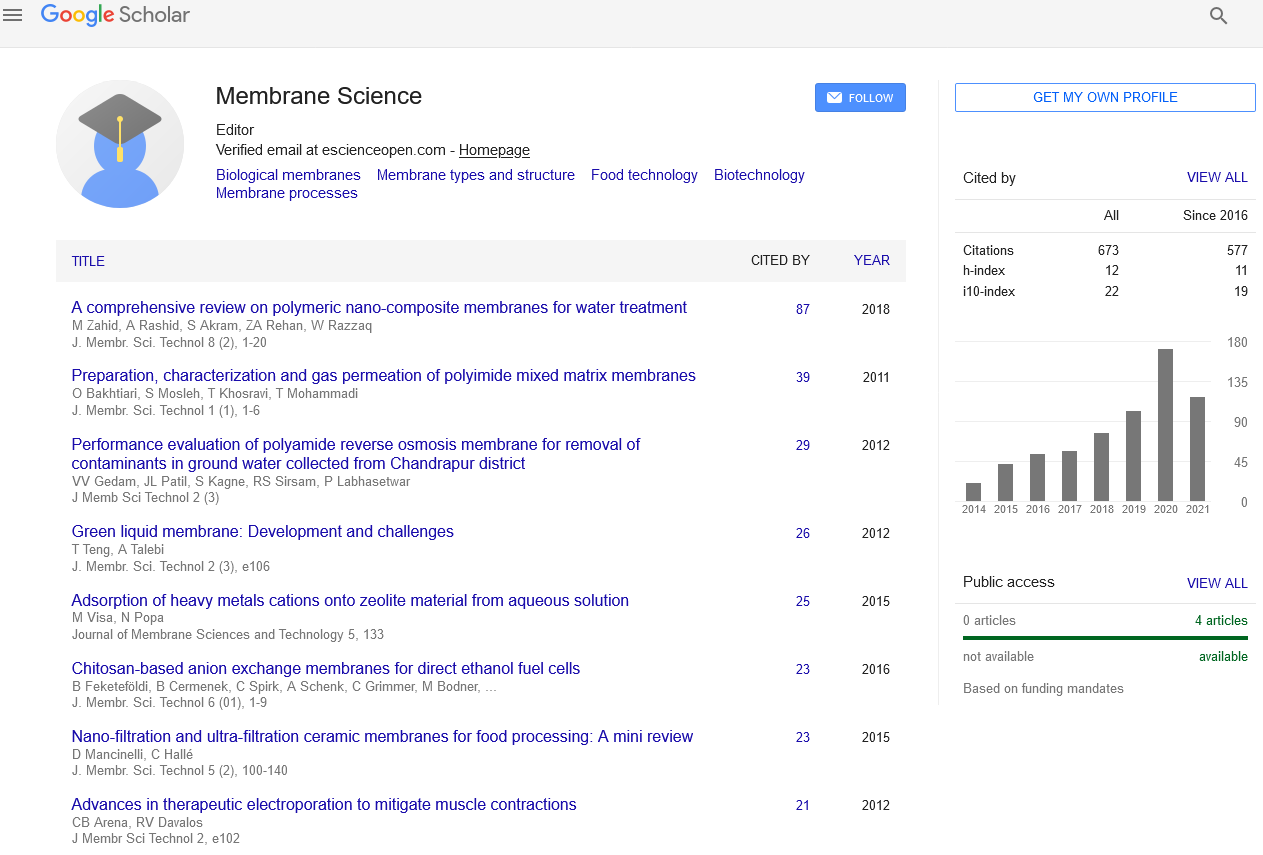Indexed In
- Open J Gate
- Genamics JournalSeek
- Ulrich's Periodicals Directory
- RefSeek
- Directory of Research Journal Indexing (DRJI)
- Hamdard University
- EBSCO A-Z
- OCLC- WorldCat
- Proquest Summons
- Scholarsteer
- Publons
- Geneva Foundation for Medical Education and Research
- Euro Pub
- Google Scholar
Useful Links
Share This Page
Journal Flyer

Open Access Journals
- Agri and Aquaculture
- Biochemistry
- Bioinformatics & Systems Biology
- Business & Management
- Chemistry
- Clinical Sciences
- Engineering
- Food & Nutrition
- General Science
- Genetics & Molecular Biology
- Immunology & Microbiology
- Medical Sciences
- Neuroscience & Psychology
- Nursing & Health Care
- Pharmaceutical Sciences
Analysis of the dynamics of hydrogen permeation across Pd-based metallic membranes using gas phase impedance spectroscopy
International Conference on Membrane Science and Technology
September 11-12, 2017 | Paris, France
P Millet
Université Paris-Sud, France
ICMMO, France
Scientific Tracks Abstracts: J Membra Sci Technol
Abstract:
Hydrogen cross-permeation across dense Pd-based metallic membranes is a process of great practical interest for hydrogen purification but also for hydrogen compression. Hydrogen selective permeation across such membranes follows a multi-step reaction mechanism that involves surface steps (H2 dissociation into H ad-atoms on the upstream side and H ad-atoms recombination into H2 on the downstream side) as well as the diffusioncontrolled transport of H ad-atoms in bulk regions. Each of these elementary steps can be rate-determining, depending on membrane characteristics (composition, thickness, microstructure), operating conditions and boundary conditions. Hence, the optimization of the hydrogen permeation kinetics first requires to separately measure surface and bulk rate constants associated to these individual steps. Gas-phase impedance spectroscopy (also called pneumato-chemical impedance spectroscopy or PIS) is a rather simple but nonetheless powerful technique that can be used for that purpose. Basic principles were introduced in 2005. PIS analysis can be viewed as the direct transposition of the well-known electrochemical impedance spectroscopy (EIS) to solidgas reactions. Based on an analogy between pressure and electrical potential on one hand, cross-permeating gas flow and electric current on the other hand, gasphase transfer functions (PIS-impedance) are obtained by taking the ratio of the Fourier transforms of any pressure/ H2 mass flow signal pairs. So far, PIS analysis has been used to analyze the dynamics of solid-gas interactions in several systems such as gas (H2) storage in metalhydride- forming materials, gas (H2) permeation across metallic membranes and H2/O2 fuel cells. Experiments are usually easy to implement, using conventional Sievert�??s-type setups. The technique is appropriate to investigate non-linear systems such as those showing strong hysteresis. The purpose of this communication is to provide a detailed description of the technique and to present recent advances in the characterization and optimization of dense metallic membranes (with both planar and cylindrical geometries), especially those used for operation in transient conditions of flow.
Biography :
P. Millet is an electrochemical engineer, Professor of physical-chemistry at the University of Paris-Sud, campus of Orsay. He graduated in 1986 from the French “Ecole Nationale Supérieure d’Electrochimie et d’Electrométallurgie de Grenoble” (ENSEEG), “Institut National Polytechnique de Grenoble” (INPG). He completed his PhD thesis on water electrolysis in 1989, at the French “Centre d’Etudes Nucléaires de Grenoble” (CEA-CENG). He is currently Director of the “Laboratory of Research and Innovation in Electrochemistry for Energy applications” (http://www.icmmo.u-psud.fr/Labos/ERIEE/index_eng. php), at the French “Institute of Molecular Chemistry and Material Science” in Orsay. His research activities focus on water electrolysis, water photodissociation, carbon dioxide electro- and photo-reduction, hydrogen storage in hydride-forming materials, hydrogen compression and hydrogen permeation across metallic membranes. He is the author of more than 150 research papers and book chapters and has presented more than 150 oral communications at national and international conferences.


